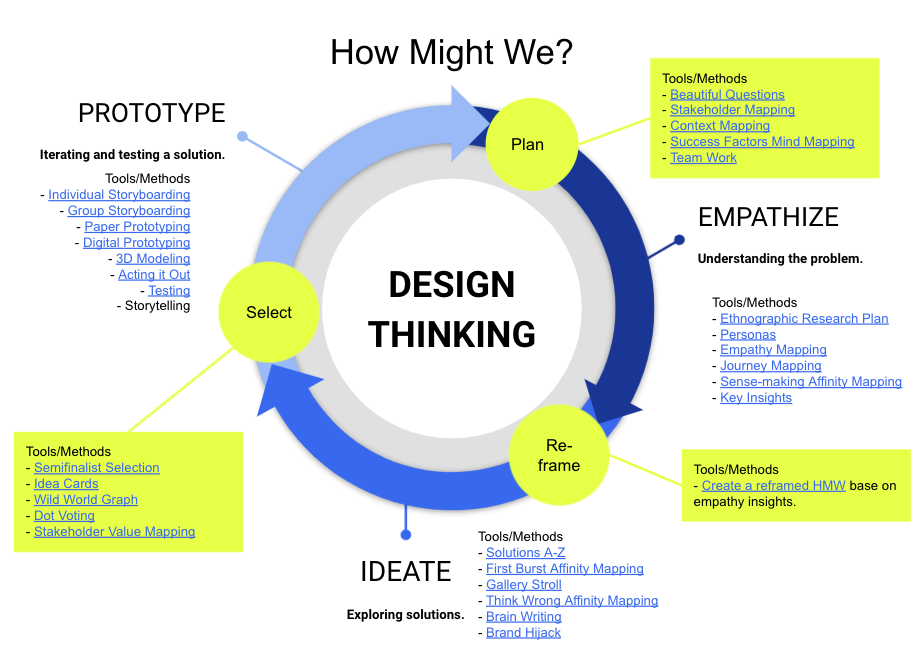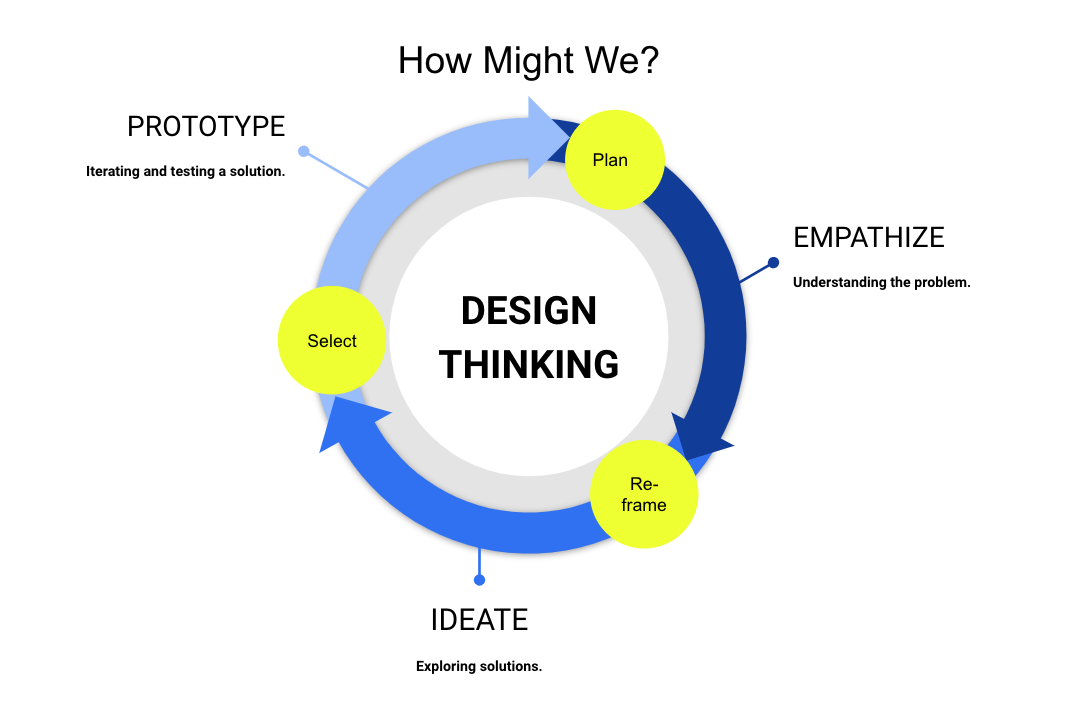
DESIGN THINKING
Intense, Collaborative Problem Solving
From ENT3607 Innovation by Design
Design Thinking is a method for innovation, a human-centered framework, that guides innovators through deeply understanding problems, to collaboratively and iteratively developing ideal solutions.
The strength of Design Thinking lies in these basic tenets:
Ask the right question: A problem must be thoroughly understood through empathy and research before a truly innovative and impactful solution may be derived.
Collaborate: The most innovative solutions are generated from the synergy created between imaginative, open-minded people with wide-ranging perspectives working collaboratively.
Iterate: Effective design requires an iterative process in which assumptions are questioned and tested at every step until an optimal solution is reached.
Design Thinking provides many activities/tools/methods for teams to use in exploring the problem space and solution space. Learning these activities and how to implement them is how you learn Design Thinking.
Design Thinking is a 3-stage sequential process that can loop back and iterate as needed to understand the problem and develop a viable solution. They are:
1. Empathize
The problem is studied and thoroughly understood from the perspective of the people experiencing it. The Empathy stage concludes with reframing* the problem based on the insight gained.
2. Ideate
The team works through a variety of brainstorming activities designed to get at unique, new, and effective solutions by escaping hardwired assumptions and breaking down associative barriers.
3. Prototype
A variety of simple prototypes are created, tested and refined until the final solution is revealed. Working with stakeholders, telling the story of your solution, and gathering feedback is key!
Check out the Design Thinking Overview Presentation!
*Note: different organizations may have their own names for these stages and sometime considered Reframing a stage unto itself. However, since reframing is a short one-step process, we fold it in to the Empathy stage. Note that no matter the number of stages and names organizations use, the activities remain consistent across all interpretations. Here are some examples of the variety of names for these stages.
Design Thinkers Academy: Empathize | (Re)frame | Ideate | Prototype | Test
Stanford dSchool: Empathize | Define | Ideate | Prototype | Test
Ideo: Inspiration | Ideation | Implementation
Luma Institute: Looking | Understanding | Making
IBM: Observe | Reflect | Make
FSU Innovation Hub: Empathize | Ideate | Build
Design Thinking Process, Principles, and Activities
This view of Design Thinking emphasizes the divergent and convergent nature of Design Thinking and the messieness factor.
Design Thinking Videos
Three perspectives on Design Thinking, and one very early demonstration.
Design Thinking Activity
Team up* and work along with this Stanford workshop video that provides a taste of Design Thinking in 80 minutes.
As an alternative, experienced facilitators can walk groups through the process in 60 minutes:
[08 minutes] Pair-up interviews on design challenge
[15 minutes] Pair-up pairs for quartets of INSIGHT Affinity Mapping
[05 minutes] How Might We Framing
[15 minutes] SOLUTION Brainstorming and Affinity Mapping
[15 minutes] Prototyping Presenting
* Design Thinking activities can be conducted live and in person with sticky notes and whiteboard, or virtually online utilizing collaborative tools such as Zoom and Miro with virtual sticky notes and whiteboard.





